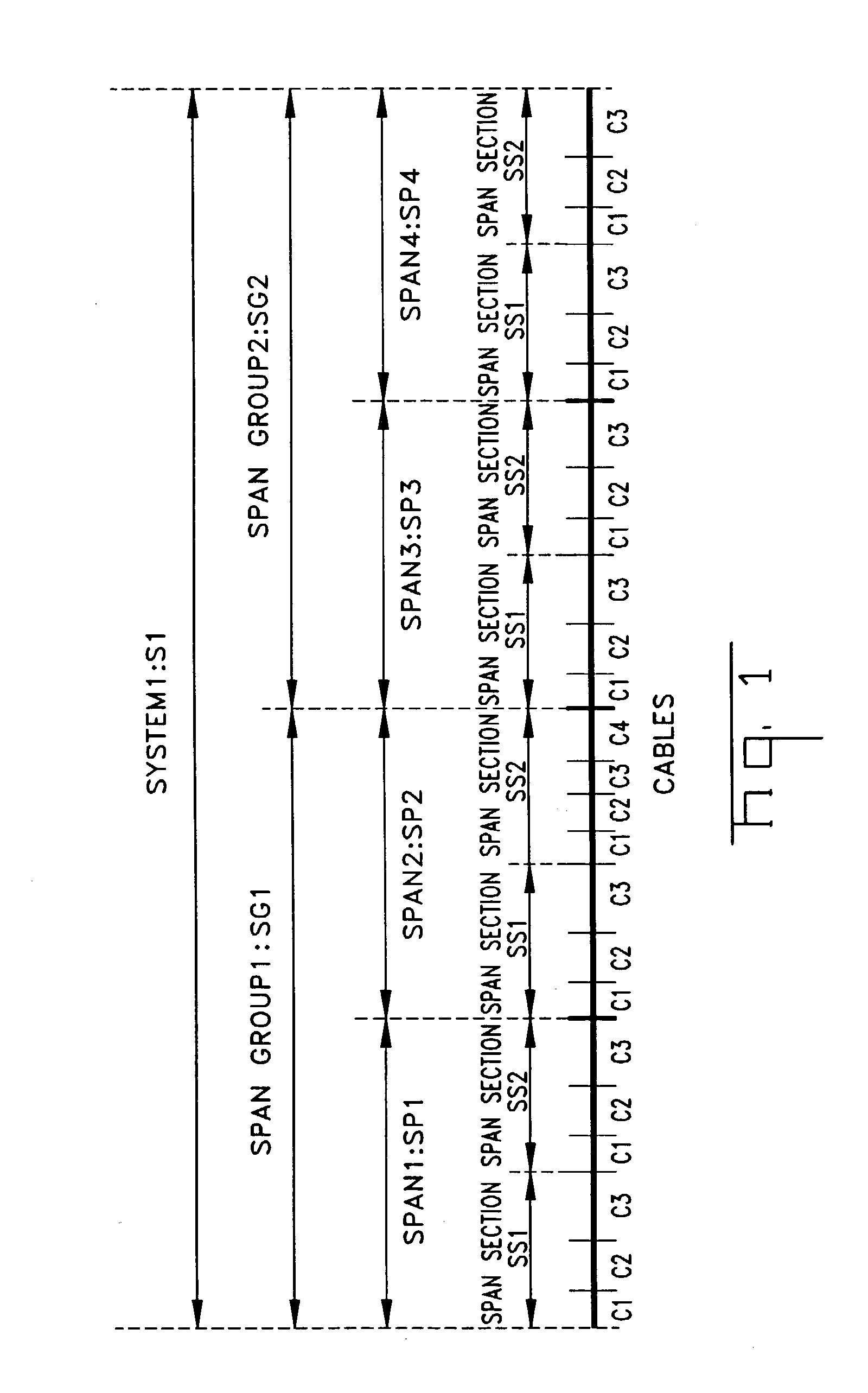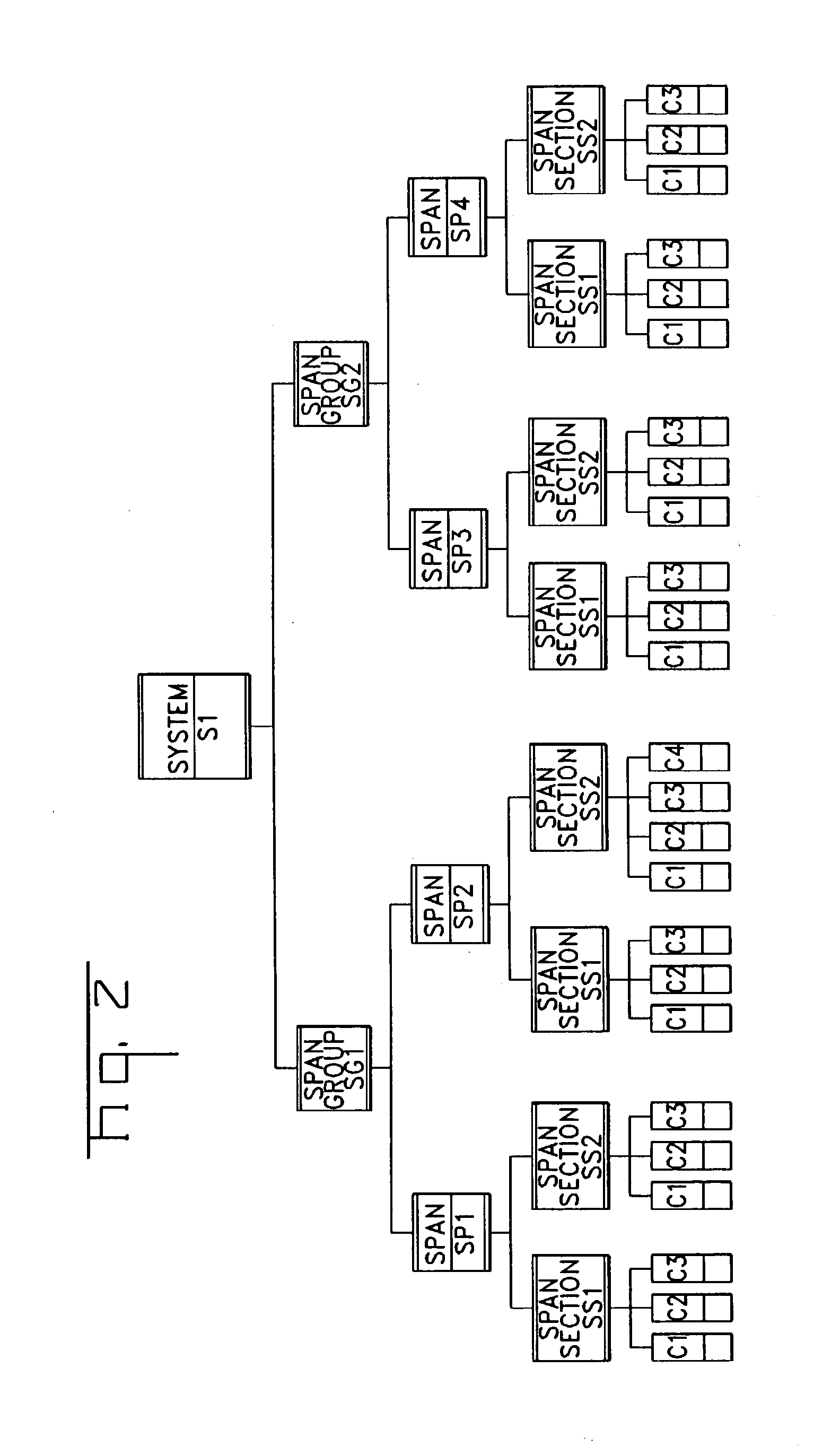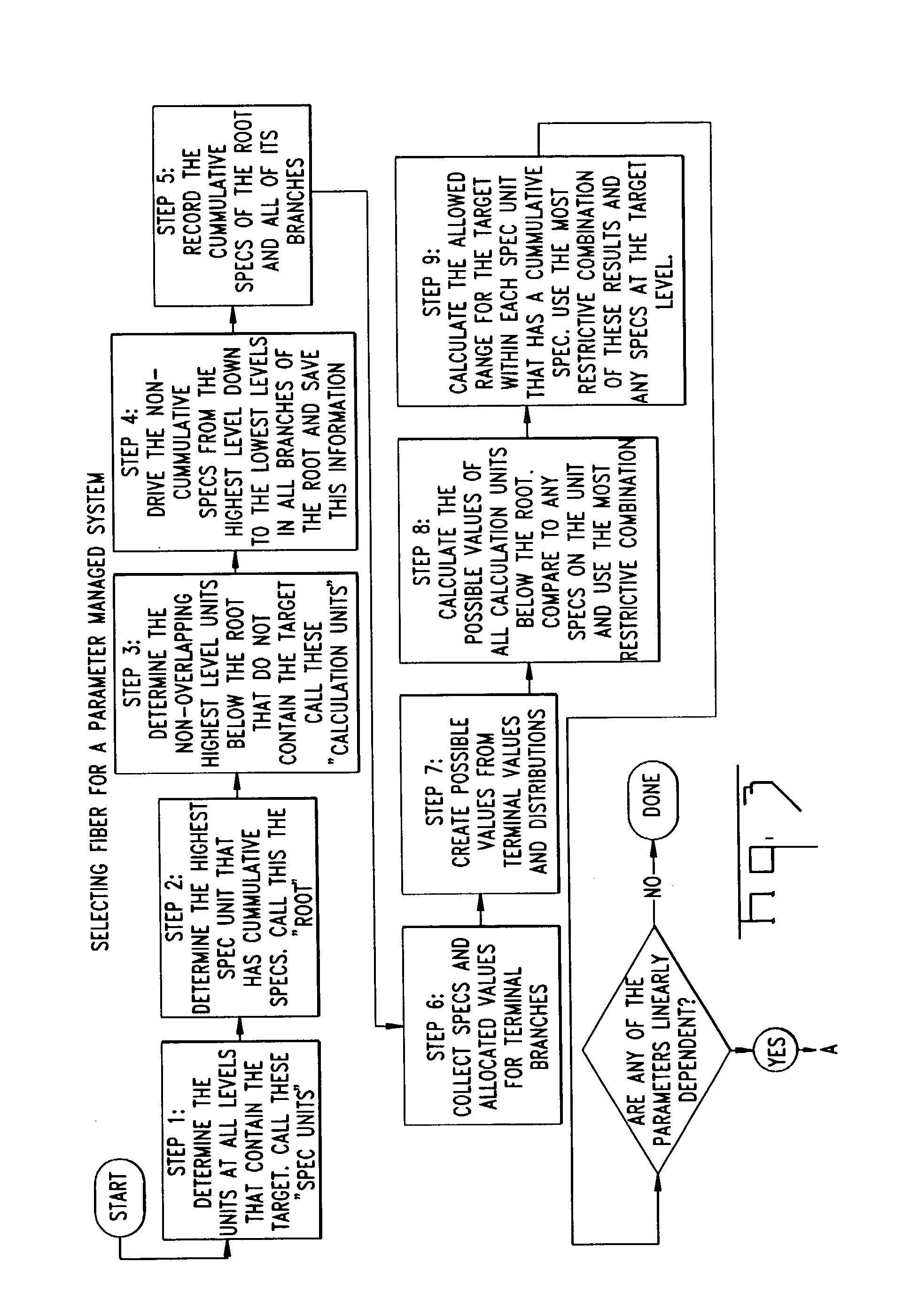Allocation of optical fibers for parameter managed cables and cable systems
a technology of parameter management and optical fibers, applied in the direction of optical waveguide light guide, electromagnetic network arrangement, instruments, etc., can solve the problems of tighter or narrower psys-max or psys, high-performance transmission system problems, and the inability to achieve normalized specification values so restrictively
- Summary
- Abstract
- Description
- Claims
- Application Information
AI Technical Summary
Benefits of technology
Problems solved by technology
Method used
Image
Examples
example
[0109]
12 Per / km per fiber DISP@1560 40 320 DISP@1620 47 376 ATTEN@1550 0.2 1.6
[0110] Step 11:
[0111] Determine the allowable range for unallocated fiber that will keep each spec unit within its specs for 1560 nm dispersion.
[0112] Calculate these base ranges, example:
13 Min Max Min Max Total unallocated unallocated Total Min Max Spec Unit spec spec allocated @1560 @1560 allocated spec spec ID Level @1560 @1560 @1560 U.sub.min1 U.sub.max1 @1620 @1620 @1620 S1 1 None None S1-SG1 2 -20 20 416 -756 -716 432 -20 20 S1-SG1-SP1 3 -30 30 416 -766 -706 432 -30 30 S1-SG1-SP1- 4 None None SS1
[0113] Steps 12-15:
[0114] Convert each base range into the corresponding values for each essentially linearly dependent parameter using equations 11 and 12 excluding the first parameter. Then for each dependant parameter (excluding the first) take the most restrictive overlap of the converted ranges, and use the most restrictive range for each dependant parameter (excluding the first) to calculate the range ...
PUM
 Login to View More
Login to View More Abstract
Description
Claims
Application Information
 Login to View More
Login to View More - R&D
- Intellectual Property
- Life Sciences
- Materials
- Tech Scout
- Unparalleled Data Quality
- Higher Quality Content
- 60% Fewer Hallucinations
Browse by: Latest US Patents, China's latest patents, Technical Efficacy Thesaurus, Application Domain, Technology Topic, Popular Technical Reports.
© 2025 PatSnap. All rights reserved.Legal|Privacy policy|Modern Slavery Act Transparency Statement|Sitemap|About US| Contact US: help@patsnap.com



